
Blaise Castle Estate (1)
Blaise Castle Estate is one of the city's gems. It lies 5 miles North West of the city centre, bounded by the districts of Henbury, Westbury-on-Trym, Coombe Dingle and Lawrence Weston.
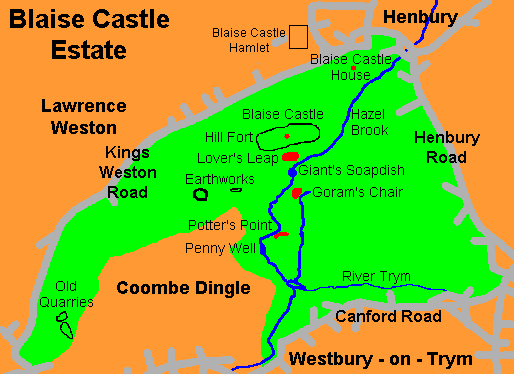
Blaise Castle Estate
When I was a boy I remember several trips to the area, two in particular stick in my mind.
The Castle sits on top of a very steep hill, and is reached by a lane that winds its way around the hill. One day I decided that rather than follow the road it would be far more fun to run down the steep wooded hillside. It was fun; right up to the moment I realised that there was no more ground in front of me - just a void. I remember stretching out my arms to try and catch a branch or something, but I tripped over a tree root and was launched into space. What had happened was that I had fallen off of one of the many rock outcrops in the grounds - the result was a very concussed young lad with a huge bump on my head.
Another time, my brother had a similar idea and came racing out of the woods and fell headlong into a huge patch of stinging nettles. Watching his face, arms and legs change colour and erupt into millions of little bumps from the stings was very entertaining.
The hill the Castle stands on has an ancient history. On top of it lies an Iron Age fort that was constructed around 300 BC. The Romans built a temple here and after they'd gone a medieval chapel dedicated to St. Blasius, the patron Saint of woolcombers was erected. Blasius was a third century Bishop of Sebaste in Armenia, Asia Minor. St. Blaise was a popular medieval saint. Both saints share February 3rd as their feast days. No one seems sure if the chapels here were actually situated here or on nearby Coombe Hill, but it is known that the remains of a chapel do actually lie on Blaise Hill.
The first recorded documentation of Henbury was in 692 AD, when the Mercian King, Ethelred, granted land, including the estate, at Henbury to the Bishop of Worcester. It remained property of the church for over 800 years. In the reign of Henry VIII (1509 - 1547) church lands were seized by the Crown. Henry VIII gave the estate to the Sadler family. In 1675 they sold it to Sir Samuel Astry who laid formal gardens and created a park. The Smyth (pronounced Smith) family of Ashton Court owned the estate until Thomas Farr bought it in 1762.
The Castle, which isn't a real castle at all, but a Gothic-style structure, was built in 1766 by Thomas Farr and designed by Robert Mylne. Not quite a folly, the castle was built as a summer house complete with kitchen, drawing room and stained glass windows. In 1771, Farr became Master of the Society of Merchant Venturers and in 1775 became Mayor of Bristol.
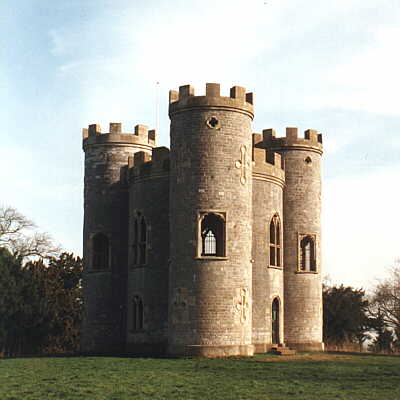
Blaise Castle
Farr went bankrupt, after the American War of Independence, in 1778. The estate changed hands several times, until John Scandrett Harford bought the estate in 1789. Harford was a bank director, Quaker and abolitionist.
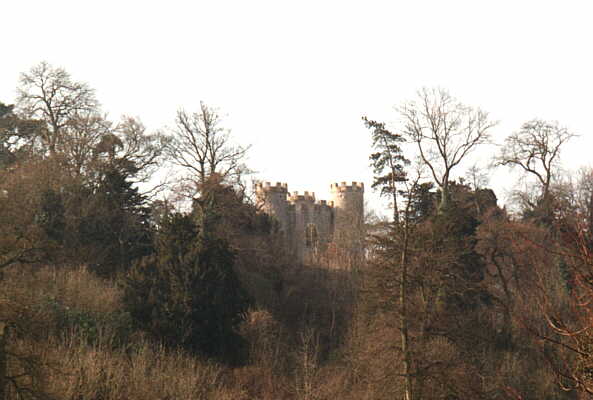
Blaise Castle from the house
The estate has undergone extensive remodeling, most of it being done by the late eighteenth century landscape architect, Humphrey Repton. Blaise Castle House, now a museum, was built in 1795 by William Paty for John S. Harford, a local banker. The museum now houses a fine collection of displays and exhibits of agricultural and social life, covering the last 300 years.
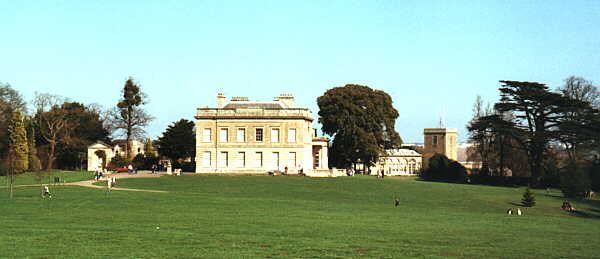
Blaise Castle House
Walking up the hill from the House to the Castle you will pass the 18th Century Butcher's Grotto.
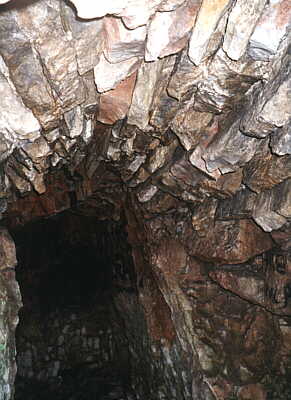
Butcher's Grotto
I've described the story of the Giants, Vincent and Goram, elsewhere. It was here that Goram was building his gorge and where he died. His chair and soapdish are to be found in the grounds of the present day estate. His footprint is also to be seen in an exposed rock.
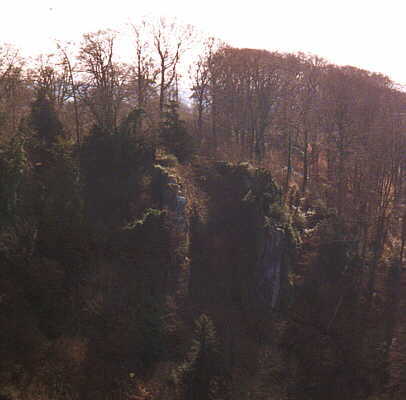
The rocky outcrops known as Goram's Chair from Blaise Castle.
This photo was taken from the top of Lover's Leap
Walking down the hill from the other side of the house will take you into the gorge through which flows Hazel Brook. Although there are well laid out paths the more adventurous might like to take some of the smaller, less used, routes down to the valley bottom. Be warned though as these pass through some very steep land.
Reaching the floor of the Gorge there are several well-used routes through it. All follow the Hazel Brook and some can be very muddy. The Brook can be crossed in several places as several picturesque stone bridges have been built across it.

One of the bridges across Hazel Brook
This one is near the Giant's Soapdish
Looking behind you at this point you can see the rocky outcrops that Blaise Castle is built on. The best view from the Castle across and into the gorge is from Lover's Leap, and from the brook you can see just how high it is.
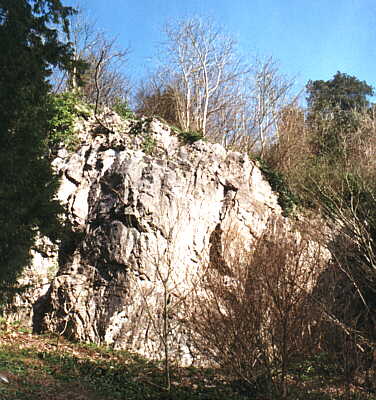
This is the lower part of Lover's Leap.
The outcrop itself is much, much higher than this but is obscured by trees
This page created 18th January 2000, last modified 2nd December 2009